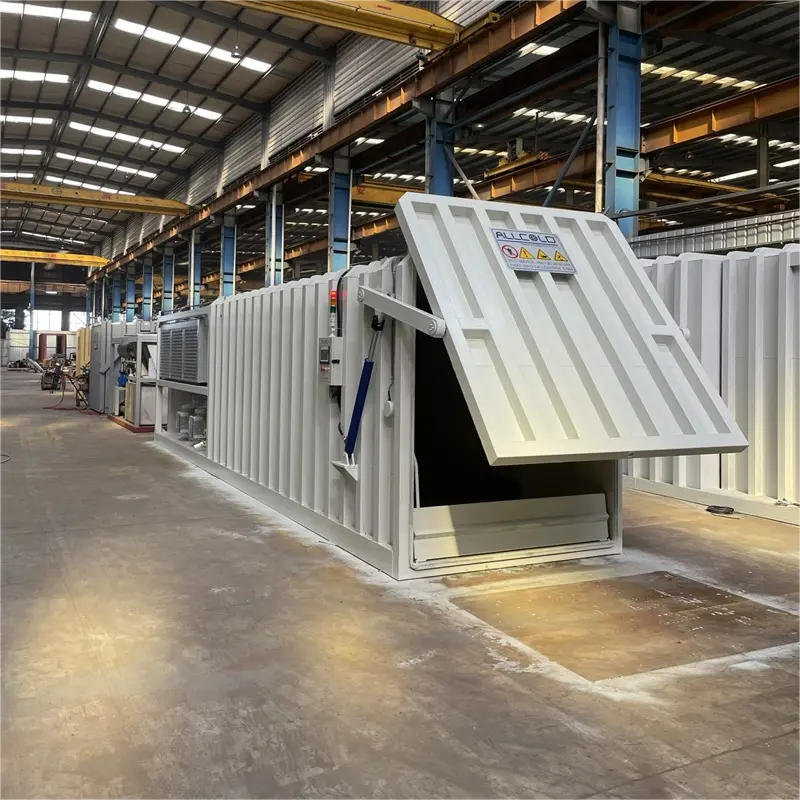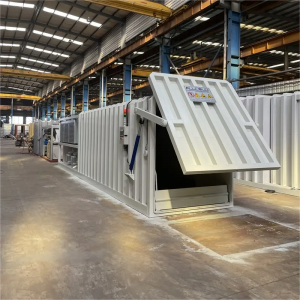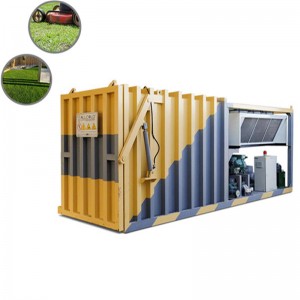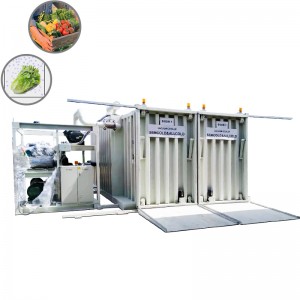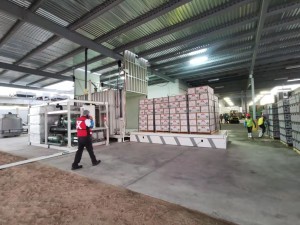Vegetables vacuum cooler Vegetables vacuum cooler


What are the applications?
As with most processes it cannot be applied to every type of product, but those it is suited to are beyond reproach. In general, suitable products must be of a leafy nature or have a large surface to mass ratio. These products include lettuce, celery, mushrooms, brocolli, flowers, watercress, bean sprouts, sweetcorn, diced vegetables, etc.


What are the advantages?
Speed and efficiency are two features of Vacuum Cooling which are unsurpassed by any other method, especially when cooling boxed or palletised products. Assuming the product is not packaged in hermetically sealed packages the effects of bags, boxes or stacking density has virtually no effect on cooling times. For this reason it is common for vacuum cooling to be carried out on palletised product just prior to it being dispatched. Cooling times in the order of 25 minutes ensure that tight delivery schedules can be met. As has already been described a small amount of water is evaporated from the product, normally less than 3%. This figure can be reduced if pre-wetting is carried out although in some instances the removal of this small amount of water is an advantage in further reducing the deterioration of fresh produce.
The quality of practically all food products begins to deteriorate upon harvesting and continues to decline thereafter. The major effort in vegetable harvesting, handling, processing and transportation is directed towards the maintenance of as much of the initial quality as possible. In the case of vegetables quality is a result of physiological and microbiological activity in the harvested product. This deterioration is a function of time and temperature: in simple terms the faster it is cooled after harvesting the better the quality and the longer the shelf life. Vacuum Cooling is the means to achieve this!
To the supermarket buyer or consumer it is a hallmark of quality to say that the product has been cooled by a unique process. Where Vacuum Cooling differs from conventional methods is that cooling is achieved from within the product rather than by trying to blow cold air over it. It is the evaporation of water within the product that has a double effect of removing the field heat and sealing in the freshness. This is especially effective in reducing the browning effect on the butts of freshly cut lettuce. No other process can offer you this marketing edge


Vegetables/Flowers/Fruits Vacuum Cooler Models&Specifications
|
Model NO. |
Processing Capacity |
Inside Chamber |
Produce Weight kg |
Electricity Type |
Total Power KW |
|
AVC-300 |
1Pallet |
1100x1300x1800 |
200-400 |
220V-660V/3P |
16.5 |
|
AVC-500 |
1Pallet |
1400x1400x2200 |
400-600 |
220V-660V/3P |
20.5 |
|
AVC-1000 |
2Pallet |
1400x2400x2200 |
800-1200 |
220V-660V/3P |
35 |
|
AVC-1500 |
3Pallet |
1400x3600x2200 |
1200-1700 |
220V-660V/3P |
42.5 |
|
AVC-2000 |
4Pallet |
2200x2600x2200 |
1800-2200 |
220V-660V/3P |
58 |
|
AVC-3000 |
6Pallet |
2200x3900x2200 |
2800-3200 |
220V-660V/3P |
65.5 |
|
AVC-4000 |
8Pallet |
2200x5200x2200 |
3800-4200 |
220V-660V/3P |
89.5 |
|
AVC-5000 |
10Pallet |
2200x6500x2200 |
4800-5200 |
220V-660V/3P |
120 |

